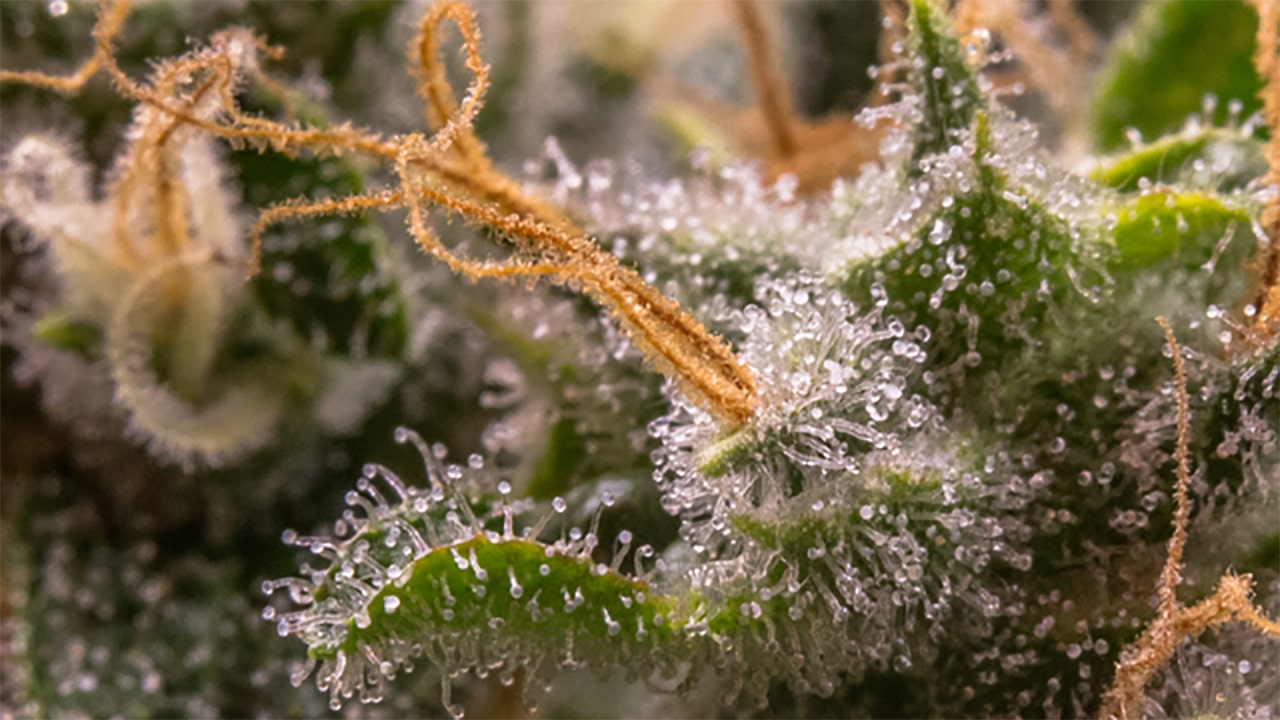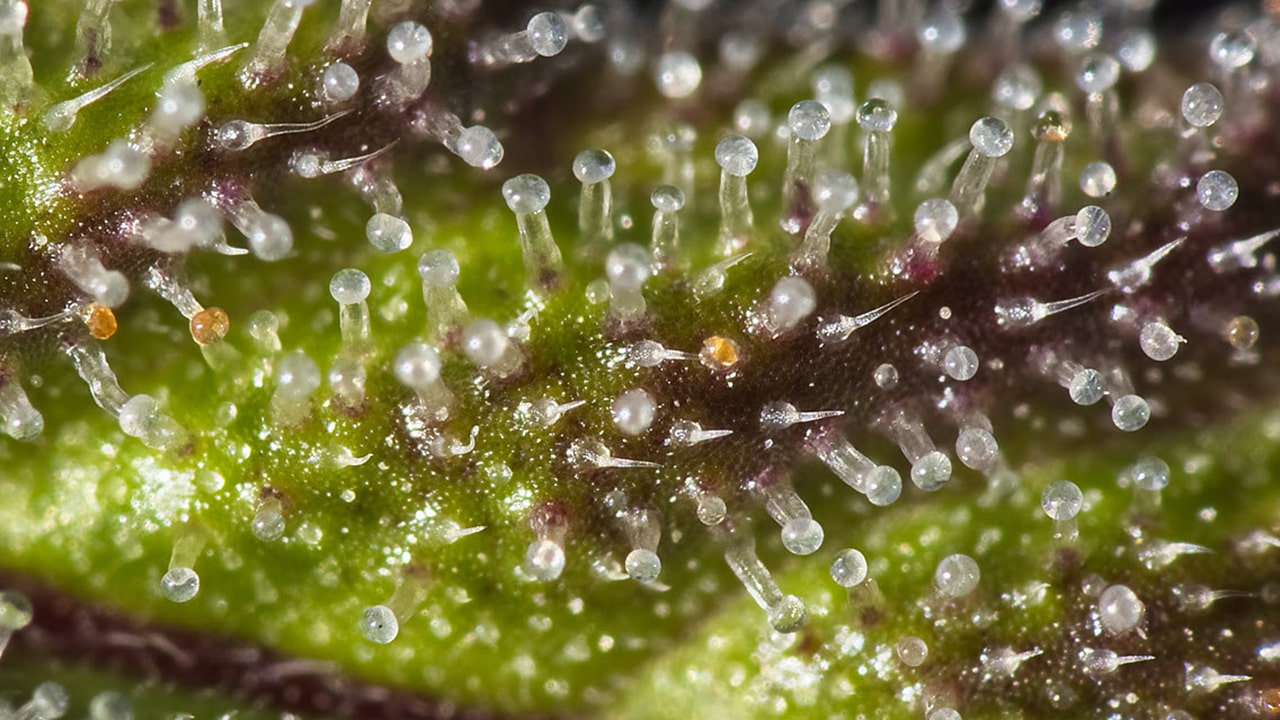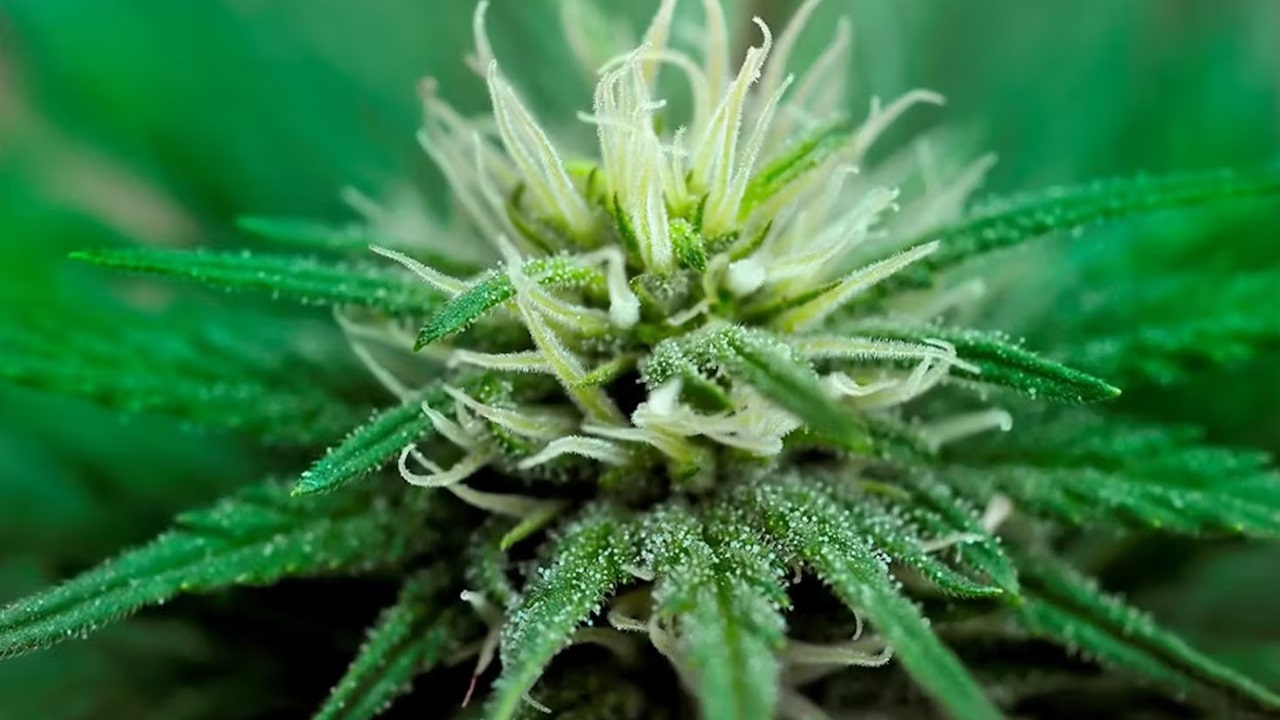
What are trichomes and why are they in the cannabis plant?
Cannabis is an amazing plant that has a number of unique characteristics, including trichomes. To understand what trichomes are in cannabis, it is necessary to take a closer look at the structure of the plant. These microscopic structures play a key role in protecting cannabis, helping it survive in the wild.
Nature is full of wonders, but also harsh trials, so plants have developed many mechanisms to protect themselves from threats. For example, some plants enter into symbiotic relationships with insects or animals that do not harm the plants themselves, but effectively destroy pests. Other plants defend themselves with thorns to repel herbivores. However, cannabis has chosen a different path of evolutionary adaptation - the creation of trichomes.

Biological purpose of trichomes
It should be noted that the development of trichomes, or so-called "trichomogenesis" (not to be confused with trichomoniasis!), is not a unique feature of cannabis. This defense mechanism is found in many plants, where trichomes serve to repel insects or animals that want to feast on the plant. However, it is the substances that are secreted from the surface of cannabis leaves and inflorescences that make it special.
A trichome is an epidermal cell or outgrowth consisting of several cells. In some plants, trichomes can reach several centimeters in length. While the trichomes of other plants are so small that they can only be seen under a microscope.
Why do humans need trichomes?
It is ironic that it is the defense mechanism developed by cannabis that has attracted so much attention to it. Most of the psychoactive and medical properties of cannabis are associated with cannabinoids such as tetrahydrocannabinol (THC), cannabidiol (CBD) and others. It is these substances that have attracted the interest of mankind due to their unique properties, due to which today there are a huge number of hemp varieties that have spread throughout the world. Its habitat has significantly expanded, exceeding natural boundaries tenfold.
Cannabinoids are contained in the resin secreted by glandular trichomes, and therefore the psychoactive effect of the variety directly depends on their quantity. Breeders strive to develop varieties rich in trichomes, as such plants become real bestsellers and gain popularity among cannabis lovers around the world. In addition, the resin secreted by trichomes contains terpenes, which are responsible for the taste and aroma characteristics of the varieties.

Classification of trichomes
There are two main types of trichomes: glandular and non-glandular. Let's start with the latter: they play a role in the survival of the plant, but they are certainly not of interest for cannabis cultivation. Non-glandular trichomes do not produce cannabinoids. Their main purpose is to protect the plant from small pests by killing or repelling them. They look like small, pointed hairs that are not visible to the naked eye.
Non-glandular trichomes can be divided into cystolic and non-cystolic. Cystolic trichomes cover the outer side of the leaves, and non-cystolic ones cover the inner side and bracts. This concludes the discussion of non-glandular trichomes, leaving the details for botanists. We are much more interested in the second type of trichome, which secretes resin during cannabis flowering.
Glandular trichomes and their types
Glandular trichomes in cannabis are divided into three main types:
- Bulbous. These trichomes cover the entire plant, giving it a sticky texture. Bulbous trichomes help retain moisture on the surface of the plant, allowing cannabis to withstand adverse weather conditions such as heat, low humidity, and strong winds. However, this type of trichome is the only one among glandular trichomes that does not release cannabinoids and terpenes.
- Capitate or head-shaped. These trichomes are shaped like a miniature mushroom and require a microscope to see. Capitate trichomes play an important role in the process of synthesizing cannabinoids and terpenes, although they are not the main producers of these substances. They initiate this process during the vegetative growth stage of the plant.
- Capitate-petiolate. These are the largest trichomes that are visible to the naked eye. They produce the bulk of the cannabinoids and terpenes contained in cannabis resin. During flowering, these trichomes become especially active, and they are what growers rely on to determine whether the plant is ready for harvest. The number of capitate-petiolate trichomes directly affects the psychoactive and medical effects, as well as the taste and aroma palette of the variety.
Why Trichome Color Matters?
Experienced growers can accurately determine when cannabis is ready to harvest by looking at the color of these small parts of the plant. In the early stages of growth, trichomes resemble miniature mushrooms, whose caps are filled with a clear liquid. As the plant develops and produces terpenes, cannabinoids, and essential oils, this liquid turns white.
Once flowering begins, the trichomes begin to change color, acquiring a yellowish-brown hue, indicating their maturity. When about 30-40% of the trichomes turn brown, the plant is considered ready for harvest. If the grower prefers a more stimulating and euphoric effect, it is better to harvest when there are still more white trichomes than brown ones.
For those looking for a relaxing, sleep-inducing effect, it is worth waiting until most of the trichomes turn brown.

Which strains have a lot of trichomes?
The amount of trichomes depends largely not only on the variety, but also on the growing conditions. If the plant receives high-quality lighting, proper feeding, optimal temperature, humidity and pH are maintained, and moderate training stress is applied, there will be more trichomes. It is important to remember that every extra touch to the inflorescences can damage the trichomes, so it is better not to touch them.
However, some varieties are prone to more trichomes. For example, White Widow and all its descendants. This variety got its name precisely because of the white trichomes that densely cover the plant, creating its characteristic appearance.

